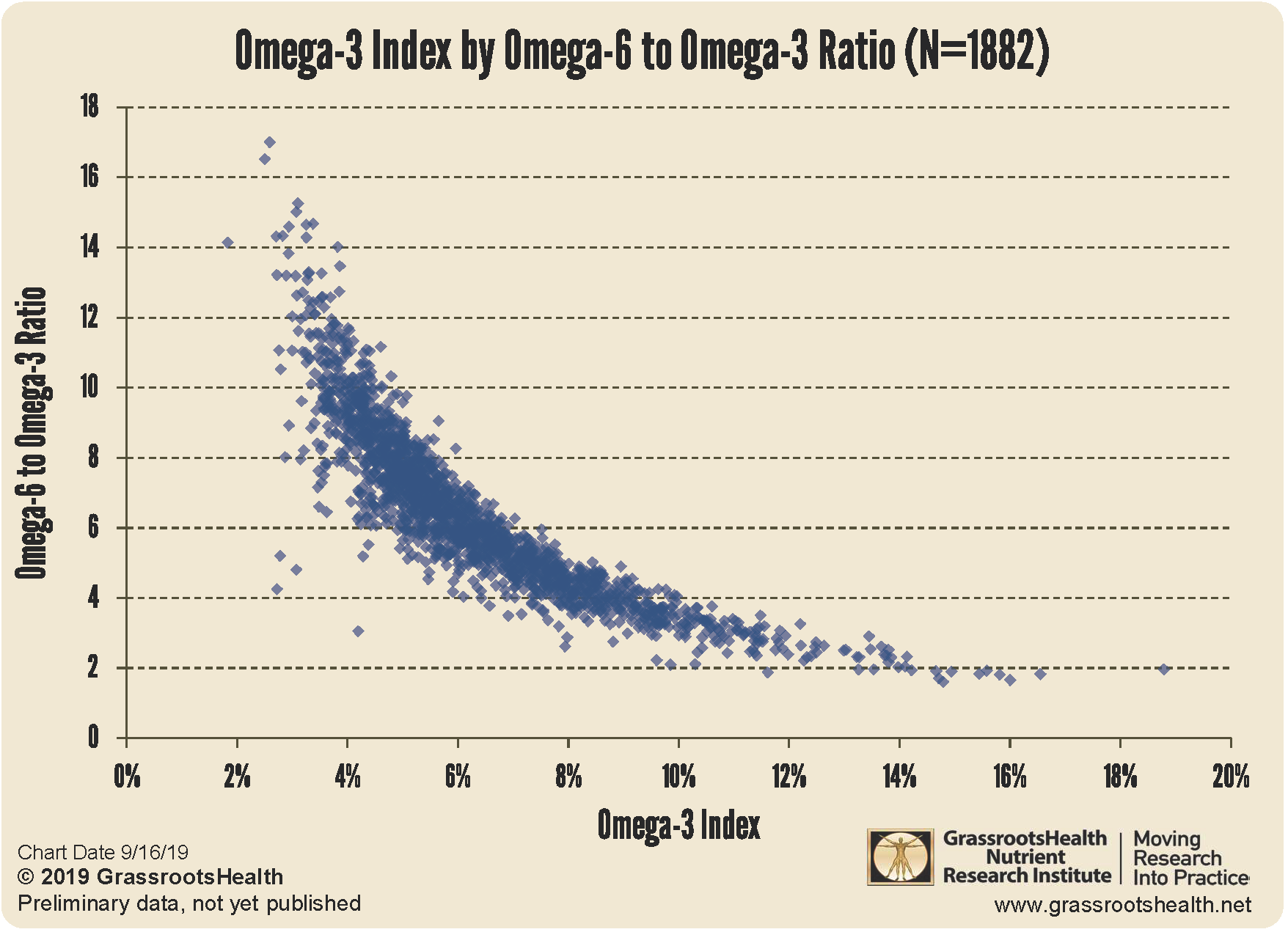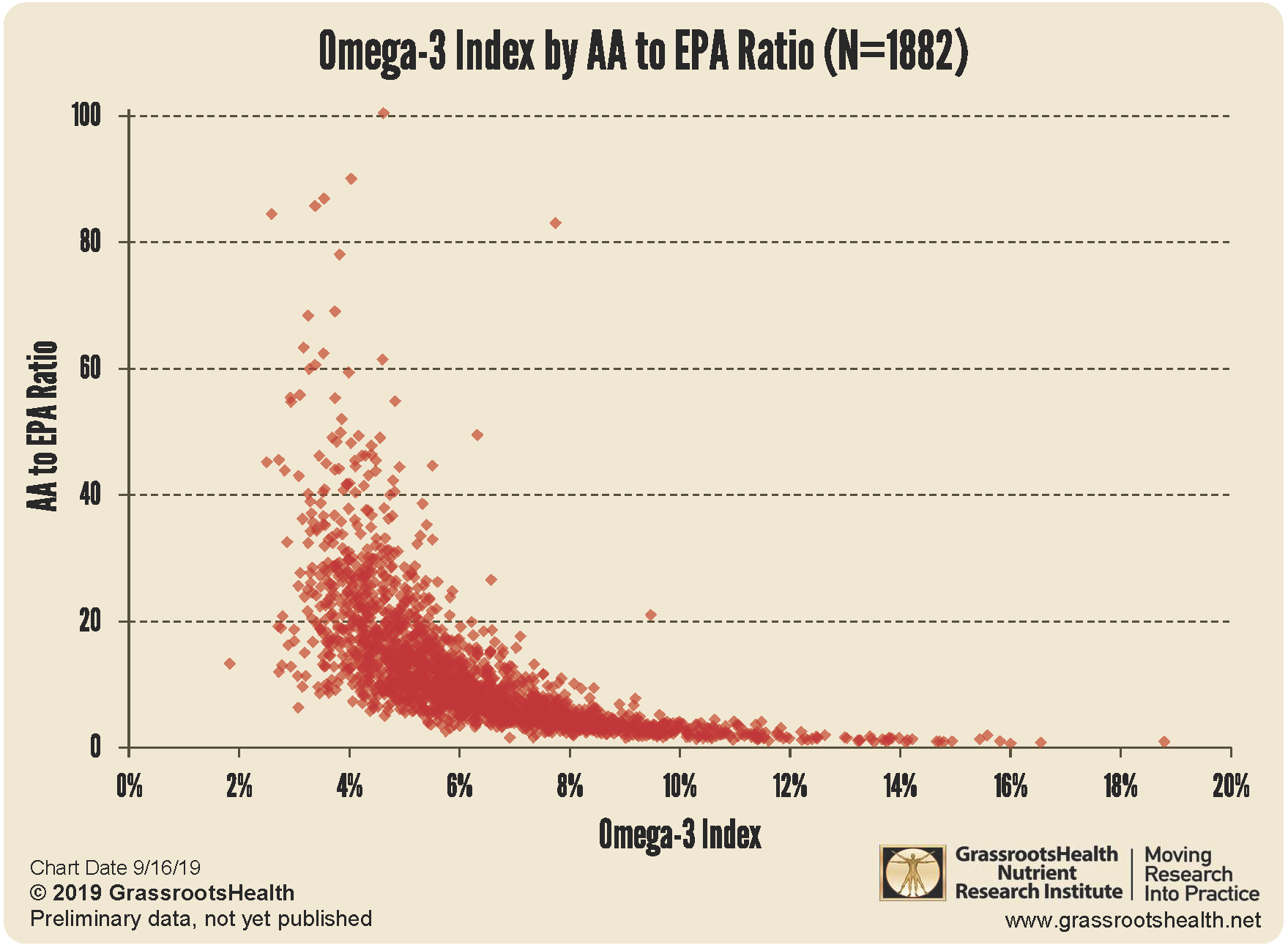Published on September 19, 2019
 Omega-3 fatty acids are a healthy type of fat that comes in multiple forms. Long-chain omega-3s, primarily EPA and DHA which are found in fish and shellfish, have been linked to numerous health benefits. For the past two years, GrassrootsHealth has offered a home blood spot test that measures the amount of the EPA and DHA in red blood cell (RBC) membranes, which is called the Omega-3 Index. This measurement reflects long-term (about four months) intake of EPA and DHA from food and supplements. Evidence shows that an Omega-3 Index greater than 8% is optimal and less than 4% is deficient.
Omega-3 fatty acids are a healthy type of fat that comes in multiple forms. Long-chain omega-3s, primarily EPA and DHA which are found in fish and shellfish, have been linked to numerous health benefits. For the past two years, GrassrootsHealth has offered a home blood spot test that measures the amount of the EPA and DHA in red blood cell (RBC) membranes, which is called the Omega-3 Index. This measurement reflects long-term (about four months) intake of EPA and DHA from food and supplements. Evidence shows that an Omega-3 Index greater than 8% is optimal and less than 4% is deficient.
Additional testing using the same blood sample is available that can determine your ratio of pro-inflammatory omega-6 fatty acids, specifically LA and AA which are found in cooking oils, processed foods, and animal products, to anti-inflammatory omega-3s. An excess amount of omega-6s can lead to the development of chronic diseases. This test provides both your combined omega-6 to omega-3 ratio as well as your ratio of the primary pro/anti-inflammatory omegas (AA to EPA). Generally, a lower ratio is better for health; however, the optimal range for health has not been established. For the AA to EPA ratio, some experts consider the desirable range to be 2.5 to 11; others consider a range or 1.5 to 3 to be low risk, 3 to 6 to be moderate risk, 7-15 to be elevated risk, and above 15 to be high risk.
The primary way to improve both your Omega-3 Index and omega-6 to omega-3 ratio is by increasing intake of EPA and DHA through fatty fish intake and/or supplement use. Using the data you provided for the GrassrootsHealth study, we assessed the association between Omega-3 Index and omega-6 to omega-3 ratio and the AA to EPA ratio. As you can see on the charts below, there is a clear relationship between Omega-3 Index and the omega-6 to omega-3 and AA to EPA ratios. As Omega-3 Index increased (indicating higher EPA and DHA intake), the ratios decreased.
Among those with an Omega-3 Index of 8% or higher, nearly all (99.7%) had an AA to EPA ratio lower than 11 and about half (49%) had a ratio of 3 or lower.
Are your Omega-3 levels in a healthy range?
Should you be taking steps to increase your omega-3 intake? Testing your Omega-3 Index levels along with your ratios, and taking daily steps to keep your Omega-3 Index at a target of at least 8%, and your vitamin D at a target level of 40-60 ng/ml (100-150 nmol/L), is important for many aspects of mental health. Find out your levels today! Log on to the shop (click the link below) to get your tests and see for yourself if your levels can be improved.
Make sure you track your results before and after, about every 6 months!
How can I track my nutrient intake and levels over time?
To help you track your supplement use and nutrient levels, GrassrootsHealth has created an online tracking system called myData-myAnswers. For each specific supplement, you can track what days you take it, how much, and many other details. This will help you know your true supplemental intake and what patterns of use work for you to reach and maintain optimum nutrient levels. Check it out today!








